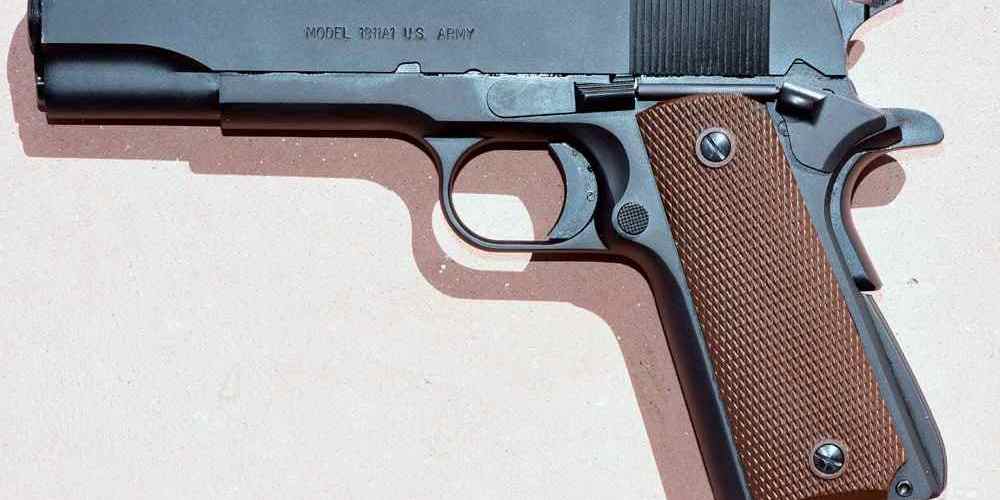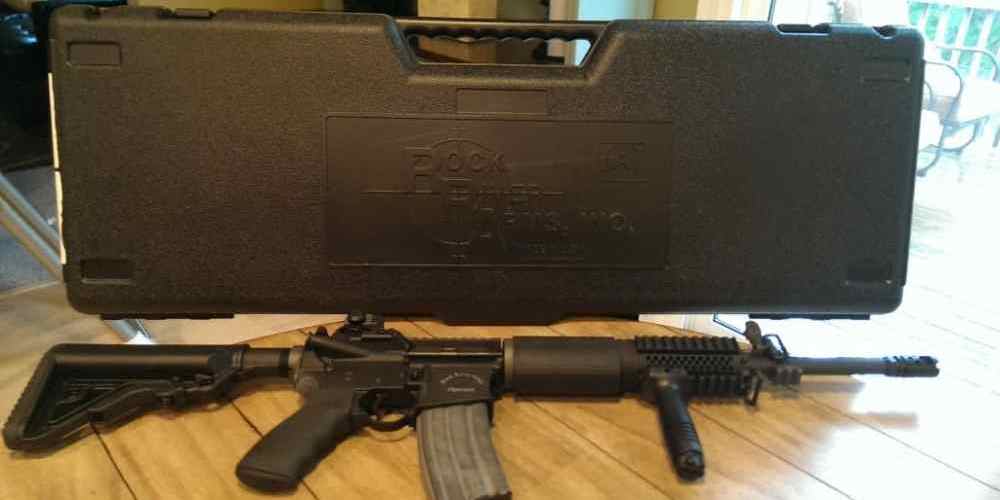“Embracing innovation while upholding tradition.”
The Impact of 3D Printing on Gun Manufacturing
The Second Amendment to the United States Constitution guarantees the right of citizens to bear arms. This right has been a topic of debate for many years, especially as technology continues to advance. One of the most recent advancements in technology that has had an impact on gun manufacturing is 3D printing.
3D printing, also known as additive manufacturing, is a process that creates three-dimensional objects by layering materials on top of each other. This technology has been used in a variety of industries, including healthcare, aerospace, and automotive. However, it has also been used to create firearms.
The impact of 3D printing on gun manufacturing is significant. With a 3D printer, individuals can create their own firearms at home, without the need for a license or background check. This has raised concerns about the potential for untraceable and undetectable guns to fall into the wrong hands.
Despite these concerns, 3D printing has also been hailed as a way to democratize gun manufacturing. In the past, gun manufacturing was limited to a select few companies with the resources to produce firearms on a large scale. With 3D printing, anyone with access to a printer and the necessary materials can create their own guns.
One of the most well-known examples of 3D printed guns is the Liberator, a single-shot handgun designed by Cody Wilson of Defense Distributed. The Liberator was created using a 3D printer and released online as an open-source design. This sparked a debate about the legality and safety of 3D printed guns.
In response to the proliferation of 3D printed guns, lawmakers have introduced legislation to regulate their production and distribution. In 2013, the United States Department of State ordered Defense Distributed to remove the blueprints for the Liberator from its website, citing concerns about national security.
Despite these efforts, 3D printed guns continue to be a topic of controversy. Proponents argue that individuals have a right to create their own firearms for self-defense, while opponents raise concerns about the potential for these weapons to be used in crimes.
As technology continues to advance, the debate over 3D printed guns is likely to continue. It is important for lawmakers to strike a balance between protecting public safety and upholding the Second Amendment rights of citizens.

In conclusion, the impact of 3D printing on gun manufacturing is a complex issue that raises important questions about the intersection of technology and the Second Amendment. While 3D printing has the potential to revolutionize the way firearms are produced, it also presents challenges in terms of regulation and safety. As we continue to adapt to modern firearms, it is crucial to consider the implications of new technologies on our society.
Smart Gun Technology: Enhancing Firearm Safety
The Second Amendment to the United States Constitution guarantees the right of citizens to bear arms. This right has been a topic of debate for many years, especially in light of advancements in firearm technology. As technology continues to evolve, so do firearms, raising questions about how the Second Amendment applies to modern weaponry.
One area where technology has made significant strides is in the development of smart gun technology. Smart guns are firearms that incorporate advanced safety features, such as fingerprint recognition or RFID technology, to prevent unauthorized use. These features can help reduce accidental shootings and prevent firearms from falling into the wrong hands.
One of the main benefits of smart gun technology is enhanced firearm safety. By requiring a unique identifier, such as a fingerprint or RFID tag, smart guns can prevent unauthorized users from firing the weapon. This can help reduce the number of accidental shootings, particularly in households with children or individuals who may not be familiar with firearms.
In addition to enhancing safety, smart gun technology can also help prevent theft. If a firearm is stolen, the thief would not be able to use the weapon without the proper identifier. This can help reduce the number of firearms that end up on the black market or in the hands of criminals.
Despite the potential benefits of smart gun technology, there are some concerns about its implementation. One of the main issues is reliability. Critics argue that smart guns may not always work as intended, potentially putting the user at risk in a dangerous situation. Additionally, there are concerns about the cost of smart guns, which can be significantly higher than traditional firearms.
Despite these concerns, smart gun technology continues to evolve and improve. Manufacturers are constantly working to enhance the reliability and affordability of smart guns, making them a more viable option for firearm owners. In fact, some states have even passed laws requiring the use of smart gun technology in certain circumstances.
Overall, smart gun technology has the potential to enhance firearm safety and reduce the number of accidental shootings and gun-related crimes. While there are still some challenges to overcome, the development of smart guns represents a positive step towards adapting the Second Amendment to modern firearm technology. As technology continues to evolve, it is important for lawmakers and firearm owners to consider how smart gun technology can help promote responsible gun ownership and enhance public safety.
The Debate Over Ghost Guns and Untraceable Firearms
The Second Amendment to the United States Constitution guarantees the right of citizens to bear arms. However, as technology advances, the debate over the regulation of firearms has become increasingly complex. One of the most controversial issues in this debate is the rise of “ghost guns” and untraceable firearms.
Ghost guns are firearms that are assembled from parts that do not have serial numbers, making them untraceable by law enforcement. These guns can be purchased online or at gun shows without a background check, allowing individuals to bypass the traditional system of purchasing firearms. This has raised concerns about the potential for these weapons to fall into the hands of criminals or individuals who are prohibited from owning firearms.
Proponents of ghost guns argue that they provide law-abiding citizens with a way to exercise their Second Amendment rights without government interference. They also point out that the technology to manufacture firearms at home has been around for decades, and that regulating ghost guns would infringe on the rights of gun owners.
However, opponents of ghost guns argue that the lack of regulation makes it easier for individuals to obtain firearms without undergoing a background check. This loophole in the system allows individuals who are prohibited from owning firearms, such as convicted felons or individuals with a history of domestic violence, to acquire weapons that can be used to commit crimes.
In response to the rise of ghost guns, some states have passed laws requiring that all firearms have serial numbers and undergo background checks before they can be sold. However, these laws have faced legal challenges from gun rights advocates who argue that they infringe on the Second Amendment rights of law-abiding citizens.
Another issue in the debate over untraceable firearms is the use of 3D printing technology to manufacture guns. With a 3D printer, individuals can create their own firearms using plastic or metal materials, bypassing traditional manufacturing processes. This has raised concerns about the potential for individuals to create undetectable weapons that can be used to evade security measures.
Proponents of 3D printed guns argue that they provide individuals with a way to exercise their Second Amendment rights without relying on traditional manufacturers. They also point out that the technology to create firearms using 3D printers is still in its early stages, and that regulating 3D printed guns would be difficult and impractical.
However, opponents of 3D printed guns argue that they pose a serious threat to public safety. These weapons can be easily concealed and are difficult to detect using traditional security measures. This raises concerns about the potential for 3D printed guns to be used in mass shootings or other acts of violence.
In response to the rise of 3D printed guns, some lawmakers have proposed legislation to regulate the manufacture and sale of these weapons. However, these efforts have faced opposition from gun rights advocates who argue that regulating 3D printed guns would infringe on the rights of law-abiding citizens.
As technology continues to advance, the debate over ghost guns and untraceable firearms is likely to intensify. Finding a balance between protecting public safety and upholding the Second Amendment rights of citizens will be a complex and challenging task. Ultimately, it will be up to lawmakers, law enforcement agencies, and the public to work together to find solutions that address the risks posed by these emerging technologies while respecting the rights of gun owners.
The Rise of Gun Tracking and Ballistic Identification Systems
The Second Amendment to the United States Constitution guarantees the right of citizens to bear arms. However, as technology continues to advance, the debate over gun control and regulation has become increasingly complex. One area where technology is playing a significant role is in the development of gun tracking and ballistic identification systems.
Gun tracking systems use technology such as RFID (Radio Frequency Identification) tags and GPS (Global Positioning System) to monitor the location of firearms. These systems can help law enforcement agencies track stolen or illegally obtained guns, as well as monitor the movement of firearms across state lines. By implementing gun tracking systems, authorities can better regulate the flow of firearms and prevent them from falling into the wrong hands.
Ballistic identification systems, on the other hand, use technology to match bullets and shell casings to specific firearms. This technology relies on the unique markings left on bullets and casings by the barrel of a gun. By creating a database of these markings, law enforcement agencies can quickly identify the weapon used in a crime and track down the perpetrator. Ballistic identification systems have proven to be a valuable tool in solving gun-related crimes and holding individuals accountable for their actions.
The implementation of gun tracking and ballistic identification systems has not been without controversy. Some argue that these technologies infringe on the Second Amendment rights of law-abiding citizens. However, proponents of these systems argue that they are necessary in order to prevent gun violence and keep communities safe.
One of the main challenges facing the adoption of gun tracking and ballistic identification systems is the cost associated with implementing and maintaining these technologies. In order to be effective, these systems require significant investment in infrastructure and training. Additionally, there are concerns about the privacy implications of tracking the movement of firearms and storing ballistic data in a centralized database.
Despite these challenges, the benefits of gun tracking and ballistic identification systems are clear. By leveraging technology to monitor the location of firearms and match bullets to specific weapons, law enforcement agencies can more effectively combat gun violence and hold individuals accountable for their actions. These systems have the potential to revolutionize the way we approach gun control and regulation in the modern era.
As technology continues to evolve, it is important that we adapt our approach to firearms and gun control. Gun tracking and ballistic identification systems represent a step forward in this regard, offering new tools and capabilities for law enforcement agencies to combat gun violence and keep communities safe. By embracing these technologies and finding ways to address the challenges they present, we can work towards a safer and more secure future for all.
How Social Media and Online Platforms Influence Gun Culture
The Second Amendment to the United States Constitution guarantees the right of citizens to bear arms. This right has been a topic of debate for many years, especially as technology has advanced and firearms have become more sophisticated. In today’s digital age, social media and online platforms play a significant role in shaping gun culture and influencing how people view and use firearms.
Social media platforms like Facebook, Instagram, and Twitter have become popular outlets for gun enthusiasts to share their passion for firearms. These platforms allow users to connect with like-minded individuals, share photos and videos of their guns, and discuss the latest trends in the industry. This has led to the creation of online communities where gun owners can come together to exchange ideas and information.
One of the ways that social media has influenced gun culture is by making it easier for individuals to access information about firearms. With just a few clicks, users can learn about different types of guns, how to properly handle and maintain them, and where to purchase them. This has helped to demystify the world of firearms and has made it more accessible to a wider audience.
Another way that social media has impacted gun culture is by providing a platform for gun manufacturers and retailers to promote their products. Companies can use social media to advertise new firearms, accessories, and training courses, reaching a larger audience than traditional advertising methods. This has helped to fuel the growth of the firearms industry and has made it easier for individuals to purchase guns and related products.
However, the influence of social media on gun culture is not without its challenges. One of the main concerns is the spread of misinformation and fake news related to firearms. With so much information available online, it can be difficult for users to discern what is accurate and what is not. This has led to a rise in conspiracy theories and false narratives surrounding guns, which can have dangerous consequences.
Additionally, social media has been criticized for its role in promoting gun violence and glorifying the use of firearms. Some users use these platforms to showcase their weapons in a way that glamorizes violence, leading to concerns about the impact this may have on impressionable individuals. This has sparked debates about the responsibility of social media companies in regulating content related to guns.
Despite these challenges, social media and online platforms continue to play a significant role in shaping gun culture and influencing how people interact with firearms. As technology continues to evolve, it is important for individuals to be mindful of the information they consume and to critically evaluate the content they encounter online. By staying informed and engaging in responsible discussions about firearms, we can ensure that the Second Amendment remains relevant in the modern age.




